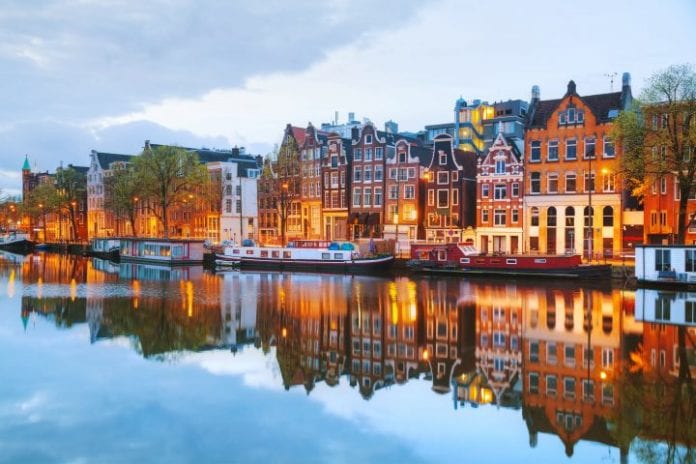Controlling the liquid streets of the Netherlands
In the Netherlands, waterways, small inland harbors and canals are used by citizens in their daily routines. Each city has a water infrastructure with high-density shipping traffic. Municipalities, provinces and other potential canal authorities such as the Ministry of Infrastructure, must be able to provide a system capable of traffic monitoring.
Vicrea, a Dutch company specializing in smart integrated information and smart city solutions, developed a traffic monitoring solution in the Netherlands canals to control the flow of boats using a wireless sensor network, according to a case study provided by Libelium.
Using lasers for traffic monitoring of ships
The system was established in order to count the number of ships sailing in the canals and determine their direction. This gave authorities the ability to plan infrastructure around data. The system was put in place in some of the most visited area of the Netherlands: Delft, The Hague, Leiden, Alphen aan den Rijn and Gouda.

There are a wide range of boats that sail on the canals: cargo boats, commercial passenger ships and recreational ships. Although it was known by public authorities and citizens that there is heavy traffic at specific times of the day, there was not any data or control to solve the problem.
“Libelium helped us in an innovative and professional way to help our project become a success”, said Erkan Efek, business consultant and architect at GIS of Vicrea.
Vicrea and Libelium partnered to developing a new laser solution that is able to monitor direction, distance and speed. The sensor detects any ship that is crossing by a concrete point, and determines the direction the ship is sailing.
The shipping traffic data monitored by the sensors added to Waspmote Sensor Platforms is sent out through Zigbee to Meshlium. 868 Mhz wireless technology is used to connect the gateway with Vicrea C loud Platform. From there, data can be further distributed to a live monitor, or it can be stored for later analysis and prediction.
The IoT way of managing traffic, with sensors
The goal of the solution is to help public institutions manage the water infrastructure. The deployment will make it possible to know if the maintenance level of canals is on par with traffic density in a canal, according to the case study. Bridge opening and closing is also automated to reduce wait times, and the platform is able to control if a boat is entering in a private or prohibit area.

The monitoring system works 24 hours a day, 7 days a week, to give public authorities a holistic view of what is happening in their water infrastructures, according to Libelium.
“The solution incorporates cost-effective elements and eco-friendly parts,” Efek said. “We use solar panels for our power supply and send data wirelessly”.
Sensors can be placed anywhere, allowing government bodies to choose where depending on the needs and the urban planning of each city. Knowing in real-time about traffic congestion or predicting maintenance for bridges are just some of the improvements that councils can apply in their strategies for water infrastructures management.
The deployment has reached the goals that the companies settled on since the beginning. Data related to passing ships and frequency will be monitored with high accuracy, costs will be drastically reduced, about 80,000 euros each year per bridge, and the system will be working with no interruption, according to the Libelium case study.

